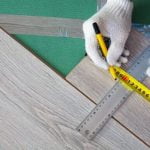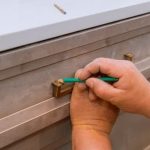Are you constantly asking yourself, “how do I improve mobile reception at home?” If so, you’re not alone. In today’s digital age, having good mobile reception at home is crucial for staying connected, whether it’s for work, staying in touch with loved ones, or simply browsing the web. In this article, we will explore the various factors that affect mobile reception at home and provide practical tips on how to improve it.
We’ll start by delving into the factors that can affect mobile reception, such as the location of your home, building materials, and interference from other electronic devices. Understanding these causes can help us identify potential solutions to improve mobile reception.
Then, we’ll discuss the importance of choosing the right mobile carrier and how researching different options can lead to better reception at home. Additionally, we will explore strategies such as positioning your phone in certain areas of your home for stronger signal and using Wi-Fi calling and signal boosters as alternative methods for improving mobile reception.
By the end of this article, you will have a comprehensive understanding of what affects mobile reception at home and be equipped with practical tips for achieving better connectivity. So if you’ve been wondering how to solve those pesky dropped calls or slow data speeds at home, read on for valuable insights on improving mobile reception.
Factors Affecting Mobile Reception
Obstructions and Interference
One of the main factors that can lead to poor mobile reception at home is obstructions and interference. Buildings, trees, hills, and other physical barriers can obstruct the signal from reaching your mobile device, resulting in dropped calls and slow data speeds. Additionally, electronic devices and appliances within your home can also interfere with the signal. Understanding these factors can help you pinpoint the root cause of your poor reception.
Distance From Cell Tower
The distance between your home and the nearest cell tower also plays a crucial role in determining the quality of your mobile reception. If you live in a remote area far from any cell towers, you are likely to experience weaker signals compared to those living in urban areas with closer proximity to cell towers. The farther you are from a cell tower, the weaker the signal will be, leading to poorer mobile reception.
Carrier Network Coverage
Another significant factor affecting mobile reception at home is the coverage provided by your mobile carrier. Different carriers have varying levels of network coverage across different geographic areas.
Before subscribing to a carrier or when experiencing poor reception, it’s essential to research and compare carrier network coverage maps for your specific location. This will help you identify which carriers offer better coverage in your area and enable you to make an informed decision on selecting a mobile carrier for improved reception at home.
Understanding these factors affecting mobile reception at home is crucial in addressing poor signal issues effectively. By identifying and acknowledging these causes, you can then explore suitable solutions for improving mobile reception within your home environment.
Choosing the Right Mobile Carrier
When it comes to improving mobile reception at home, one of the most important factors to consider is choosing the right mobile carrier. Different carriers have varying coverage areas and signal strengths, so it’s essential to research and find the best option for your specific location. One way to start is by checking coverage maps provided by different carriers. These maps can give you a general idea of which carriers have strong coverage in your area.
In addition to coverage maps, it’s also helpful to look for user reviews and feedback regarding mobile reception from different carriers. Online forums and review websites often have valuable insights from actual customers using these services. Pay attention to comments about signal strength, call quality, and data speeds in your area. This firsthand information can help you make an informed decision when choosing a mobile carrier for improved reception at home.
Another important aspect to consider when researching mobile carriers is their customer support and service reliability. A carrier may have good coverage in your area, but if their customer service is poor or if they frequently experience network outages, it could still negatively impact your overall experience with mobile reception at home.
| Factors to Consider | Importance |
|---|---|
| Coverage Maps | Provides general idea of carrier’s signal strength in your area |
| User Reviews | Gives firsthand insights on signal strength, call quality, and data speeds |
| Customer Service & Reliability | Affects overall experience with mobile reception at home |
Positioning Your Phone for Better Reception
If you are experiencing poor mobile reception at home, finding the best spots in your home for a stronger signal can make a significant difference. Here are some tips and tricks to help you position your phone for better reception:
1. **Find the closest window:** When trying to improve mobile reception, finding the nearest window can be beneficial. Signals can be blocked by thick walls and other obstructions, so being close to a window can help improve reception.
2. **Avoid metal objects:** Metal objects can interfere with mobile signals, so it’s best to avoid them when trying to find a spot with better reception. This includes metal furniture, appliances, and even large metallic decorations.
3. **Elevate your phone:** If possible, try to elevate your phone by placing it on a higher surface. Being on an elevated position can help improve signal strength as it reduces obstructions between your phone and the nearest cell tower.
By following these simple tips, you can increase your chances of finding a spot in your home with better mobile reception. As technology continues to advance, there are also additional options available such as signal boosters and Wi-Fi calling that may further enhance the quality of your mobile connection.
Using Wi-Fi Calling and Signal Boosters
When it comes to improving mobile reception at home, there are alternative methods to consider aside from switching carriers or optimizing your home network. Two effective options are using Wi-Fi calling and signal boosters. These methods can help improve your mobile reception without having to rely solely on the availability of a strong cellular signal.
To start, Wi-Fi calling allows you to make and receive calls over a Wi-Fi connection instead of a cellular network. This is especially useful if you have a weak cellular signal at home but a reliable Wi-Fi connection.
Many smartphones and mobile carriers support this feature, and it can be easily activated in your phone’s settings. By using Wi-Fi calling, you can bypass poor cellular reception altogether and make clear, uninterrupted calls using a stable internet connection.
Another option to explore is the use of signal boosters or repeaters. These devices work by capturing an existing cellular signal outside or near your home, amplifying it, and then rebroadcasting the enhanced signal within the house.
This effectively extends the coverage area of your mobile reception inside your home, providing better call quality and faster data speeds. Signal boosters come in different types, such as femtocells, amplifiers, or whole-home solutions, so selecting the right one depends on your specific needs and budget.
In addition to these alternative methods, it’s important to note that both Wi-Fi calling and signal boosters may require some initial investment or setup. However, the benefits of improved mobile reception at home can greatly outweigh these considerations, ultimately providing you with a more reliable communication experience. Evaluating these options alongside other factors like carrier choice and network optimization can lead to significant improvements in mobile reception within your residence.
- Wi-Fi calling offers an alternative way to make calls using a stable internet connection instead of relying on a weak cellular signal.
- Signal boosters work by capturing an existing outside cellular signal, amplifying it, and rebroadcasting the enhanced signal within the house.
- Both options may require some initial investment or setup but can greatly improve communication reliability at home.
Home Network Optimization
Upgrade Your Router
One of the first steps to optimizing your home network for better mobile reception is to upgrade your router. Older routers may not be as efficient at providing a strong Wi-Fi signal, which can affect your mobile reception. Look for a router that supports the latest Wi-Fi standards and has features such as beamforming technology, which helps direct the signal towards your devices for improved coverage.
Placement of Router
The placement of your router can greatly impact the strength of your Wi-Fi signal and subsequently, your mobile reception. Make sure to position your router in a central location within your home, away from walls and obstructions, to ensure an even distribution of the Wi-Fi signal. Elevating the router or placing it on a higher shelf can also help improve coverage throughout your home.
Wi-Fi Channel Optimization
In densely populated areas, the Wi-Fi channels can become congested due to multiple networks operating in close proximity. This congestion can cause interference and result in poor mobile reception. To address this issue, consider using tools or apps that analyze the Wi-Fi channels in use and switch to a less crowded channel for better signal quality.
By implementing these tips for optimizing your home network, you can significantly enhance your mobile reception and ensure that you stay connected at all times within the comfort of your home.
External Antenna Installation
If you have tried all other methods to improve your mobile reception at home without success, it may be time to consider the option of installing an external antenna. An external antenna can significantly enhance your signal strength by providing a direct connection to the nearest cell tower. This can be especially useful in rural or remote areas where the natural landscape may obstruct signal transmission.
When considering an external antenna installation, it’s important to first check with your mobile carrier to determine if they support this type of setup. Some carriers may offer specific antennas or recommendations for compatible devices. Additionally, you should also research and comply with any local regulations or permits required for antenna installation in your area.
There are different types of external antennas available, including omni-directional and directional antennas. Omni-directional antennas are designed to receive signals from multiple directions, while directional antennas focus on capturing signals from a specific direction. It’s important to evaluate which type would be most beneficial based on the location and proximity of nearby cell towers.
| External Antenna Type | Advantages |
|---|---|
| Omni-Directional | Receives signals from multiple directions |
| Directional | Focused signal capture from a specific direction |
In addition to the type of antenna, the installation location is crucial for optimal performance. Ideally, the antenna should be installed in a high and unobstructed area outside your home for maximum signal reception. Keep in mind that professional installation may be necessary for proper alignment and setup of the external antenna system. Overall, installing an external antenna can be a reliable solution for improving mobile reception at home when other methods have proven ineffective.
Troubleshooting Common Issues
One common issue many people encounter with mobile reception at home is dropped calls. This can be frustrating, especially when you are in the middle of an important conversation. Dropped calls can occur due to a variety of reasons such as network congestion, interference, or even a problem with your phone.
To troubleshoot this issue, try moving to a different location in your home to see if the reception improves. Additionally, check for any software updates for your phone and contact your mobile carrier if the problem persists.
Another common problem is slow internet speed on your mobile device while at home. Slow internet can make it difficult to browse the web, stream videos, or use apps that require a strong connection. To address this issue, first check if there are any background apps consuming data on your phone. You can also try resetting your network settings or contacting your mobile carrier to ensure that you are getting the best possible service in your area.
Lastly, some people may experience a lack of signal in certain areas of their home. This could be due to interference from nearby structures or geographical features that obstruct the signal. One way to resolve this issue is by considering the installation of a signal booster or external antenna as mentioned earlier in this article. These devices can help amplify and extend the mobile signal within your home, especially in areas where it is typically weak.
Conclusion
In conclusion, achieving better mobile reception at home is essential for staying connected and being reachable at all times. Understanding the factors that affect mobile reception, such as distance from cell towers, building materials, and network congestion, is crucial in finding effective solutions. By choosing the right mobile carrier and researching options with good coverage in your area, you can significantly improve your mobile reception at home.
Positioning your phone in areas with better signal strength and utilizing Wi-Fi calling and signal boosters are practical ways to enhance mobile reception within your home. Optimizing your home network by using a router with a broader range, updating firmware, or adjusting the channel settings can also contribute to stronger mobile reception. Additionally, considering external antenna installation may be necessary for those living in rural or remote areas with poor cellular coverage.
Lastly, troubleshooting common issues like software updates, SIM card replacement, or contacting your carrier for support can help address any persistent problems with mobile reception at home. By implementing these tips and strategies, you can enjoy improved mobile reception and seamless connectivity while at home.
Frequently Asked Questions
How Can I Boost My Cell Phone Signal in My House?
Boosting the cell phone signal in your house can be achieved by installing a signal booster, which amplifies the existing signal and improves coverage inside the home. Another option is to use Wi-Fi calling if your phone and carrier support it, as this can help improve connectivity when regular cellular signals are weak.
How Can I Get Better Cell Phone Signal in My Mobile Home?
To get better cell phone signal in a mobile home, you can try using a cell phone signal booster specifically designed for smaller spaces. Additionally, positioning your mobile home near a window or choosing an area with fewer obstructions may also help improve cell phone reception.
How Can I Improve My Mobile Signal Strength Indoors?
Improving mobile signal strength indoors can be done by keeping your phone fully charged, as weak batteries can impact reception. You can also try moving closer to windows or higher floors of buildings, and avoid placing electronic devices that may interfere with the signal.
If these measures aren’t effective, consider using a dedicated cell phone signal booster for indoor use.

I’m thrilled to have you here as a part of the Remodeling Top community. This is where my journey as an architect and remodeling enthusiast intersects with your passion for transforming houses into dream homes.





